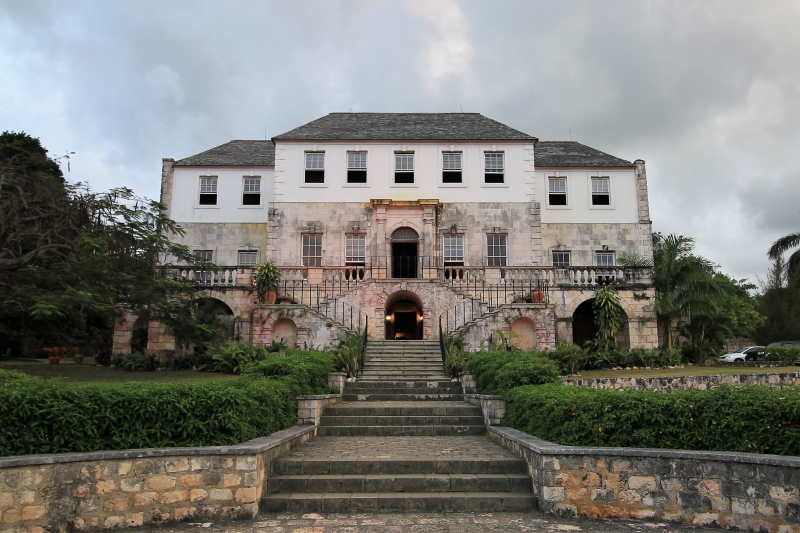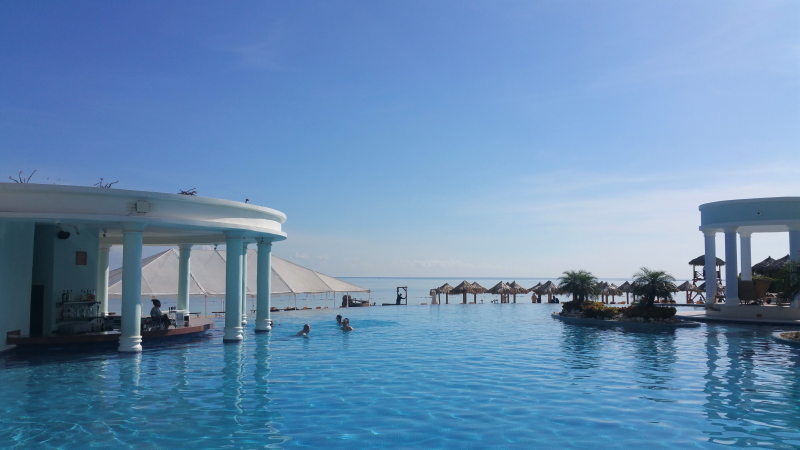Today, the grounds of the former Rose Hall plantation, a seaside stretch of land on the outskirts of Montego Bay, boasts world-class golf courses and five-star resorts. Yet if there is anywhere in Jamaica that’s still haunted by the ghosts of its past, it is here. The Rose Hall Great House, the plantation home lording over Rose Hall, is said to be haunted by a murderous witch named Annie Palmer.
Twilight is falling when my family and I approach the stately Georgian mansion for the evening ghost tour. With torches lighting up the white face of the house, the guide gives us the low down.

The construction of Rose Hall Great House began in 1750. Photo Adán Cano Cabrera.
Centuries ago, fields of sugarcane flourished at Rose Hall. But, like elsewhere in the Caribbean, this sweetness was produced at a bitter cost: slavery. Rose Hall was worked by about 250 enslaved Africans, and legend has it that Annie Palmer was once the mistress.
Annie, it’s said, was born in Haiti to an English mother and Irish father who both died from yellow fever when she was just a child. Annie’s Haitian nanny adopted her and taught her black magic and voodoo. Then, when Annie grew up, she moved to Jamaica and married John Palmer, the owner of Rose Hall. It wasn’t long, however, before she murdered John and then murdered her two subsequent husbands. Ultimately, Annie met a similar fate, killed by her lover a freed slave named Takoo.
Suddenly, I spot movement in a window on the top floor: the ghost of a veiled woman in white. Sure, I know it’s a modern Jamaican playing a part. But in the hot, thick night air, a chill goes down my spine all the same. My husband and I are baby-wearing our two little ones—ages one and two—and we’re a bit worried that this tour is going to be too scary for them. Nonetheless, when the guide ushers us into the house, we follow.
During the Christmas Rebellion of 1831, slaves laid waste to Rose Hall, but in the 1960’s it was restored and filled with antique paintings and furnishings that are magnificent, even if they are not all from the correct period. The doors and staircase are of rich mahogany. Impressive chandeliers hang from the ballroom and dining room ceilings. The walls are not papered but rather covered in silk with bird and palm motifs. And on one wall, there’s a portrait of a woman in red whose eyes seem to follow me wherever I go.
In Rose Hall, lights flicker on and off. Objects seem to move by themselves. And ghosts are at every turn. The kids seem fine with the antics of these actors, but I scream several times and try to press myself into the middle of the tour group. I don’t want any ghost brushing by me.
This is a fun, thrilling tour, but it’s also educational as it speaks to the very real and tragic conditions that the slaves were forced to endure. Upstairs, in one of the bedrooms, a ghost wandered in, cradling a baby. Then, suddenly, she threw the baby from the window. The guide explained: slave mothers were sometimes so desperate that their children not grow up under the yoke of slavery that they killed them. Slaves, we also learn, had to whistle while working in the dining room to prove that they weren’t sampling any of their masters’ food. Throughout the tour, we heard the eerie sound of whistling.

The Iberostar Rose Hall is a five-star resort on land that used to be part of the Rose Hall Plantation. Photo Adán Cano Cabrera.
When we finally file out of the house, the ghosts are dancing and drumming by firelight on the lawn. Our guide encourages all of us o to dance with them and shake off the spirits of Rose Hall so that we don’t bring them home with us.
With the kids in our arms, my husband and I move to the music that’s like a heartbeat—the heartbeat of Jamaica.




